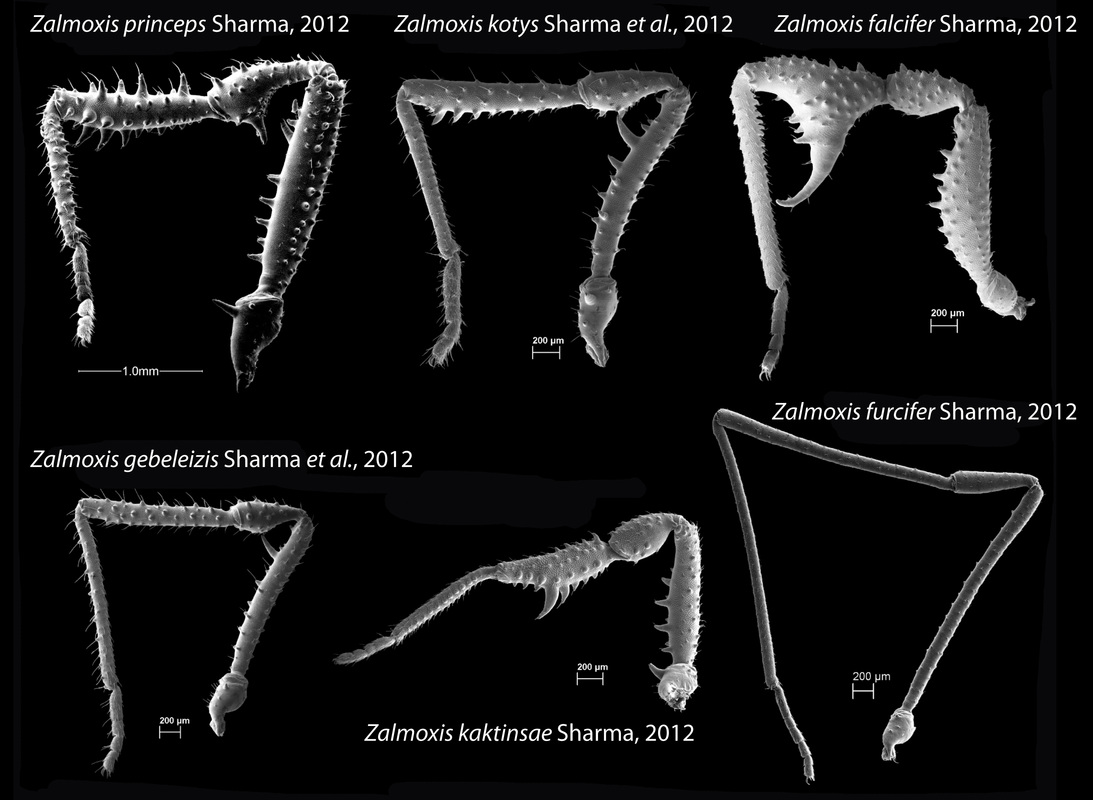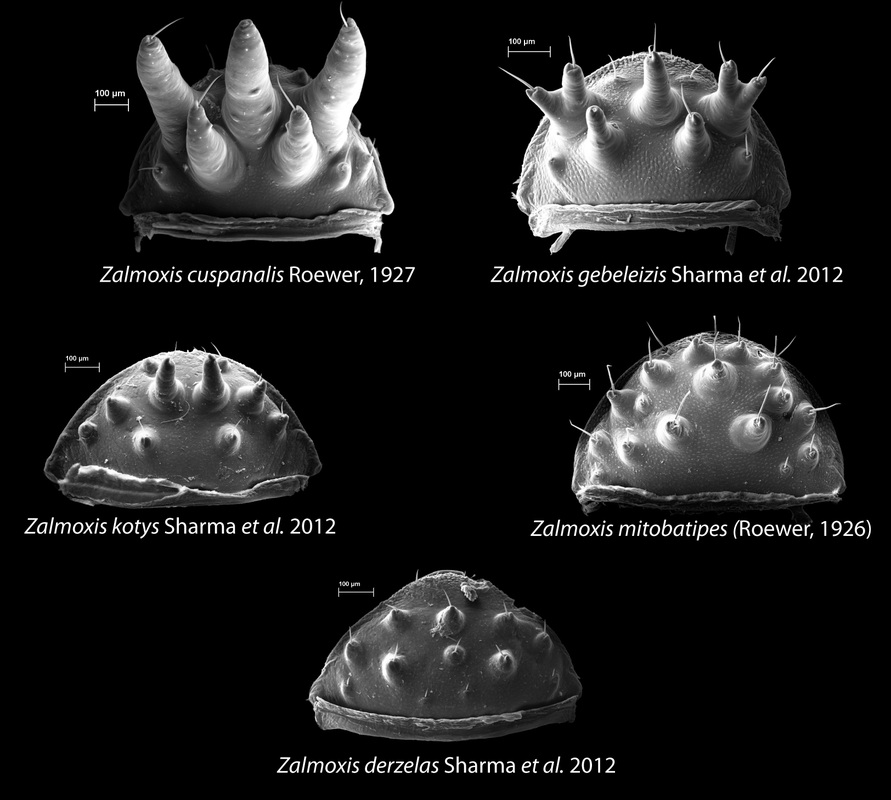Zalmoxidae systematics
Zalmoxidae is a small family of Laniatores with a very curious distribution. Just over 200 species have been described, with potentially hundreds more awaiting formal description. A phylogeny is shown here.
Subsequent to taxonomic revision, the Indo-Pacific zalmoxids are restricted to a single genus, Zalmoxis, comprising 62 species. Males of this genus bear sexually dimorphic legs, which can be greatly enlarged and embellished with armature.
Subsequent to taxonomic revision, the Indo-Pacific zalmoxids are restricted to a single genus, Zalmoxis, comprising 62 species. Males of this genus bear sexually dimorphic legs, which can be greatly enlarged and embellished with armature.
Some species from Southeast Asia also have sexually dimorphic armature on the posterior plate.


